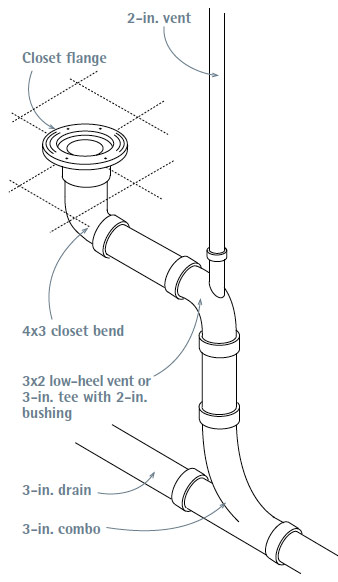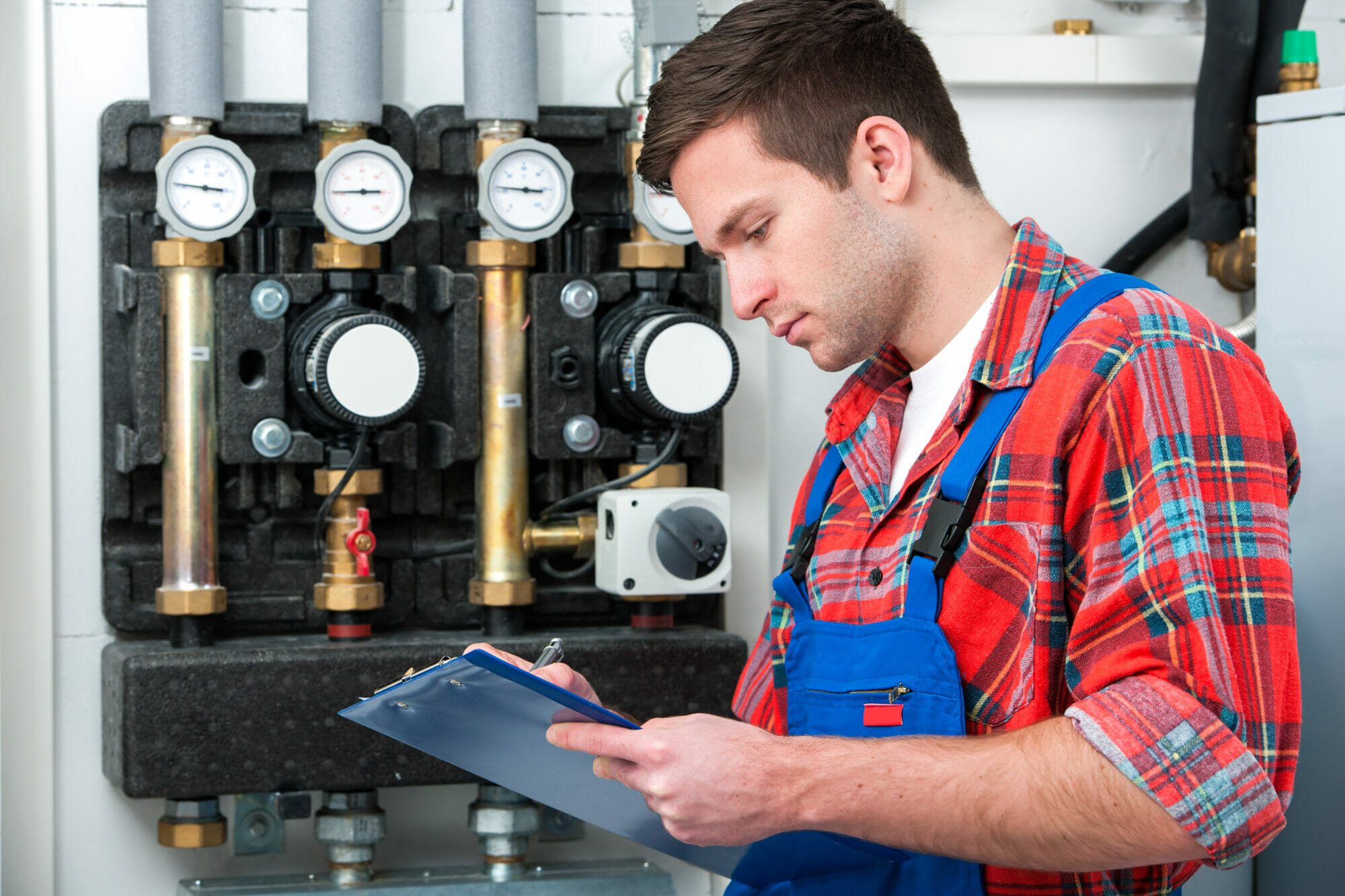Achieving Adequate Ventilation in Your Plumbing System: How
Achieving Adequate Ventilation in Your Plumbing System: How
Blog Article
What're your insights and beliefs about What Are Plumbing Vents and Why Are They Important??

Proper air flow in plumbing systems is commonly overlooked, yet it is important for preserving the performance and safety of your home's plumbing. Ventilation assists manage air pressure, stop the build-up of damaging gases, and make certain the efficient removal of waste. In this overview, we will certainly discover the significance of appropriate pipes air flow, how it works, and the advantages it offers your plumbing system.
Understanding Air Flow in Pipes
Ventilation in pipes refers to the network of pipelines that permit air to stream with the water drainage system. These vents offer numerous objectives, consisting of managing atmospheric pressure within the pipelines, stopping drain gases from getting in the home, and assisting in the smooth flow of wastewater.
How Air Flow Functions in Plumbing Equipments
Air Pressure Regulation
Correct ventilation keeps well balanced air pressure within the pipes system. When water moves with pipelines, it displaces air. Without appropriate ventilation, this displacement can develop adverse pressure, leading to reduce drains or siphoning of water from traps, which can create unpleasant smells to seep into the home.
Stopping Sewer Gas Buildup
One of one of the most essential functions of plumbing vents is to avoid sewage system gases, such as methane and hydrogen sulfide, from accumulating within the home. These gases can position serious health and wellness threats and are highly flammable. Vent pipes permit these gases to run away securely outdoors.
Assisting in Waste Elimination
Air flow helps in the effective removal of wastewater by preventing airlocks in the water drainage system. When air can stream easily through the vents, it allows water and waste to move smoothly via the pipelines, reducing the threat of obstructions and backups.
Kinds Of Plumbing Vents
Main Heap Vent
The main stack vent, also called the vent pile, is the main vent in a pipes system. It prolongs from the major drain align through the roofing, allowing gases to get away and fresh air to get in the system.
Branch Vent
Branch vents connect to the major stack vent and serve specific fixtures, such as sinks, commodes, and showers. These vents ensure that each fixture has adequate ventilation to function correctly.
Air Admission Valve (AAV).
An Air Admittance Valve (AAV) is a one-way valve that permits air to go into the plumbing system without the demand for a standard air vent pipe prolonging via the roofing. AAVs are frequently utilized in restorations or areas where setting up a typical air vent is impractical.
Signs of Poor Air Flow in Pipes.
Slow Draining Fixtures.
If your sinks, tubs, or commodes are draining pipes slowly, maybe an indication of poor ventilation. Poor air flow can create a vacuum cleaner effect, making it hard for water to drain properly.
Gurgling Appears.
Gurgling sounds originating from drains are frequently an outcome of air being drawn with water traps because of adverse pressure in the pipes. This is a clear sign of insufficient ventilation.
Undesirable Smells.
Sewage system smells inside your home are a warning that your plumbing system is not effectively ventilated. This can suggest that sewer gases are not being sufficiently vented outside, resulting in possibly hazardous problems.
Usual Ventilation Blunders.
Poor Vent Sizing.
Utilizing small vent pipelines can cause poor air circulation and pressure inequalities in the system. It's important to make use of vents that meet the details demands of your plumbing system.
Improper Vent Positioning.
Placing vents as well far from the components they offer can lower their efficiency. Correct positioning guarantees that air can move openly and effectively through the system.
Disregarding Code Requirements.
Building regulations provide details standards for plumbing air flow. Disregarding these codes can cause a system that falls short to work correctly and might bring about expensive repair work or carcinogen.
Advantages of Appropriate Air Flow.
Improved System Performance.
Appropriately ventilated pipes systems run extra successfully, with fewer obstructions, faster draining pipes, and less stress on the pipes. This efficiency expands the life expectancy of the pipes system.
Improved Air Quality.
By protecting against drain gases from entering your home, appropriate ventilation contributes to far better indoor air high quality, making your living setting healthier and a lot more comfy.
Stopping Water Damage.
Appropriate air flow aids prevent water from being siphoned out of traps, which can cause drain gases getting in the home and creating water damages over time.
Actions to Ensure Appropriate Ventilation.
Consulting Pipes Codes.
Constantly seek advice from local pipes codes when developing or customizing your pipes system. These codes offer the required standards for appropriate airing vent and ensure your system fulfills safety requirements.
Regular Inspection and Upkeep.
Routine examinations can help determine possible air flow issues before they become major troubles. Upkeep jobs, such as cleansing vent pipes and checking for clogs, are crucial for maintaining the system in good working order.
Professional Setup.
For brand-new installations or significant modifications, it's a good idea to hire a professional plumbing technician. They have the competence to make certain the ventilation system is correctly created and set up according to code.
Verdict.
Appropriate ventilation is an important component of any kind of plumbing system, ensuring that it works effectively and securely. By recognizing the relevance of ventilation, acknowledging the indications of poor air flow, and taking actions to maintain your system, you can stop pricey concerns and safeguard your home's air high quality.
4 Things You Should Know About Your Plumbing Vents
What Plumbing Vents Are
Also called a vent stack, a plumbing vent is a vertical pipe attached to your drain line that runs through your roof. The plumbing vent pipe, or plumbing air vent, removes gas and odors from your plumbing system and allows fresh air to enter the pipes, helping the water to flow out of the drain pipes.
What Plumbing Vents Do
Plumbing vents have two basic functions. One of which is to allow unpleasant smelling wastewater and sewer gasses to escape your plumbing system instead of entering your home. Plumbing vent pipes are typically located on roofs, away from windows, to ensure the fumes exit the home completely.
The other function of the plumbing vent is to move fresh air into your plumbing system. This helps move water through every plumbing fixture in your house, like toilets and sink drains. Think of the way in which you need to let a little air into the bottle as you pour soda in order to make the drink flow smoothly.
Different Types of Plumbing Vents
True vent: This is the most common vent option. In simplest terms, a true vent is a vertical pipe attached to your drain line that exits through the roof. They often function as the main vent that other fixtures can connect to. Re-vent pipe or auxiliary vent: Attached to the drain line near specific plumbing fixtures, re-vent pipes run up and over to connect to the main vent. Common vent: Two plumbing fixtures installed on opposite sides of a wall are typically tied into the vent stack using something known as a sanitary cross. Wet vent: This venting option operates as a drain pipe and a vent at the same time. Wet vent drainage systems drain water from one fixture while venting the air from another. Although they’ve been used for over 100 years, wet vent systems have only recently been added to the plumbing code in many areas. If you’re planning on installing one in a bathroom remodel, make sure you check your local code prior to construction. Loop vent: For free-standing fixtures like kitchen island sinks, loop vents are ideal. These vent pipes run under the floor, rise from the P-trap, and create a loop inside the cabinet sink. Air admittance valve: An AAV is a one-way mechanical valve typically installed at the site of the plumbing fixture. AAVs allow venting to occur without having to tie into a larger venting system. They’re ideal for venting fixtures where you aren’t able to easily connect to an existing vent system. Common Plumbing Vent Issues
Although vent pipes typically don’t have water flowing through them, they’re still subject to many typical plumbing issues. For example, clogs are one of the most common problems associated with sewer vent pipes. If your vent pipe gets clogged, all of your plumbing fixtures tied into the vent stack will be affected.
A sink with a slow drain that bubbles and gurgles or a strong sewage smell around your toilet are both indicators that your toilet vent pipe is clogged. Because most vent pipes exit through the roof, old leaves, twigs or even a bird’s nest could be clogging the pipe.
Clogs in your vent pipe system cause a buildup of negative pressure, meaning that water won’t be able to flow out of your home very well. It’s similar to putting your finger over the opening of a straw to trap water inside. When you remove your finger, the water is able to flow out of the straw.
If you suspect you have any blockage in your vent, make sure you have a professional come examine the situation. Left unchecked, a blocked air vent can lead to other costly repairs, like leaks and sediment buildup.
Under Pressure
Pipe vents are essential aspects of a home’s plumbing system. Owning a home means learning about all sorts of things you never put much thought into before. But by understanding as much as you can about the important systems of your home, you can keep those budgets intact and those anxiety levels low.
https://www.homeserve.com/en-us/blog/home-improvement/plumbing-vents/

As a serious person who reads about Why Plumbing Air Vents Are Important, I was thinking sharing that post was really useful. Enjoyed reading our content? Please quickly share it. Help somebody else discover it. Thank you for taking the time to read it.
About This Report this page